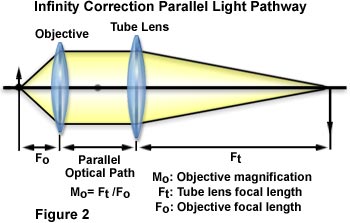As always, my intention is not to saturate you with technicalities and elaborate words but make it easier for you. Today I would like to simplify the concept of focal length since it is impossible to have an SLR camera (or consider buying one ) without knowing what the focal length means.
WHAT IS THE FOCAL LENGTH OF A TARGET?
Focal length is one of the first things that stand out from an objective when considering a purchase. Said in very plain words, the focal length becomes something like the scope of the objective. The higher the value, the objective will have more "zoom" to put it in some way. (Please forgive me purists, maybe it is not an orthodox explanation but many people understand it better that way). The greater the focal length, the greater the zoom will have the objective. Less focal length, more "far" things will be seen, say, but the framing or viewing angle will be much wider instead.HOW IS FOCAL LENGTH MEASURED?
The focal length is measured in millimeters. So that we understand each other: a focal length of 70mm means that the lens is able to zoom and approach the photographed subject much more than a lens with a focal length of 18mm. And one of 200mm will have even greater zoom capability. The more the value goes up, the more zoom we will have, the closer we get to the subject, but the smaller the value of the focal length (24mm, 18mm, 14mm, and so we go down ...) the less zoom capacity the lens / lens will have and instead greater framing will offer.OBJECTIVES ACCORDING TO FOCAL LENGTH
After this brief explanation, let's look at the objectives in the market. Normally most of the lenses and lenses for sale for SLR cameras are lenses with a variable range of focal length, I mean that they are lenses that normally have a focal length that goes from one value to another, for example it is very common to find focal length lenses from 18mm to 55mm or 55mm to 200mm . This means that the objective has that whole range, and that we can regulate it as we please: a very high value 200mm type if we want to zoom in on a relatively distant object, or a very small value 18mm type if what we want capturing is a complete framing of a panoramic scene, landscape, etc. There are also lenses with fixed focal length on the market. Those who read this blog regularly know how LOVED I am from what I call King of the Objectives, the 50mm f / 1.4 . If you want to know the supernatural, almost magical, properties of this objectiveFOCAL LENGTH RANGE: SMALL OR LARGE?
My first camera was a Nikon D60 , it came standard with two lenses: one 18-55mm and one 55-200mm. At the beginning I was glad, I thought 'well I have an additional goal, two objectives will be better than one I say .. " , he still had that mentality few more things better, the" desire to live "as would Mota. But after a short time I realized that going out on a photographic excursion with 2 objectives was not the most practical, since I had to change the objective every little time. I began to observe that there were people who had only one objective that ranged from 18 to 200mm, only one, so I thought, “How practical! that way you don't have to walk removing one and placing another every little time.. I decided to sell my two lenses / lenses and adding a little money to buy a single lens that had the widest range of focal length (18mm-200mm). After some inquiries I changed my mind again. Since then I continue to maintain the two different objectives (plus others that I bought). You wonder why? A goal, simplifying it a lot, is nothing more than a tube with a series of glass lenses inside. These lenses are made in the best possible way to take the best photography for the focal length for which that lens was designed. The wider the range of the focal length, the harder it will be to get perfect photos . It is as if it were a subject of specialization: an 18mm-55mm lens is specialized in that range and therefore will take better photos than an 18mm-200mm lens.THE GOLDEN COUNCIL
Buying a single lens with a lot of focal length range is also not the end of the world, you can still take decent pictures with it (remember who makes the photos?). It also has the advantage of facilitating the task of having everything in one objective, but if what really worries you is to get a good photograph , and you are willing to spare no effort to get it, then, dear reader and dear reader, what It is better to have several objectives with reduced focal lengths. Thus each objective will have its use and its momentum. Hey I love people who devour an article to the end Thank you for getting here. I hope you found it useful. If you enjoy reading, here is more material that I published on the subject of objectives:- Ideal Focal Distance According to Types of Photography
- Objective Abbreviations of the Most Popular SLR Cameras
- SLR Objectives ... What Do So Many Numbers Mean?
- The 4 Best SLR Objectives You Need Most
- Objective Cleaning: The Basics You Need to Know
- Nikon Lens Compatibility
- Superstitions About SLR Objectives ..
- How to Choose Your Next SLR Objective (Without Wrong)


